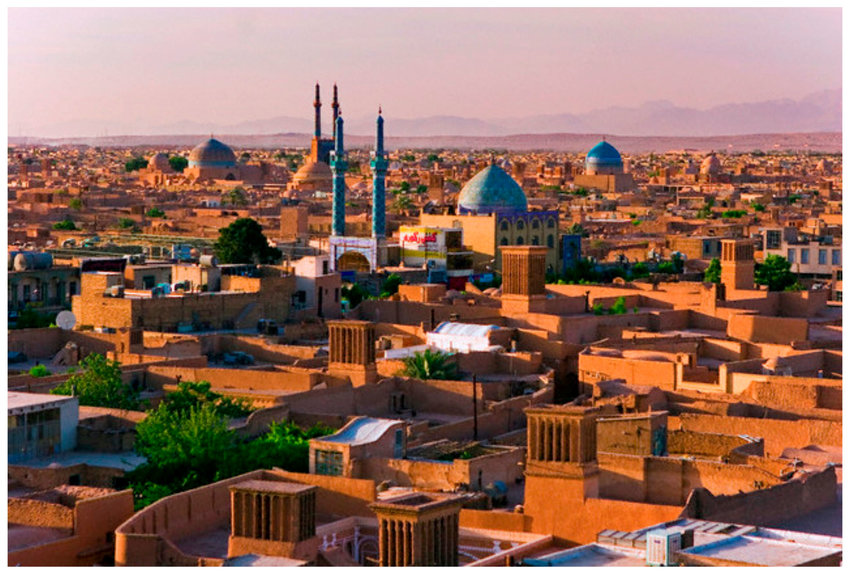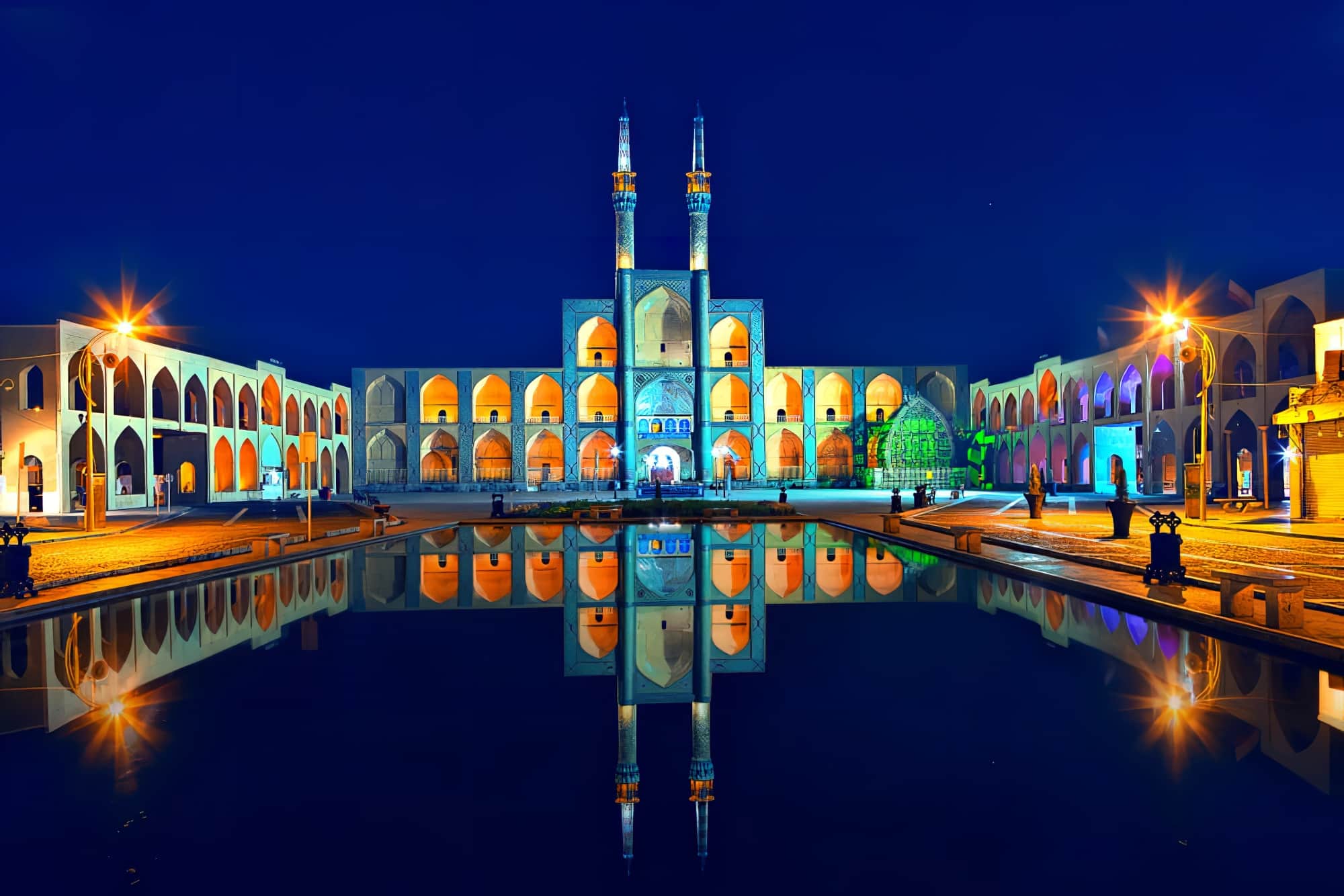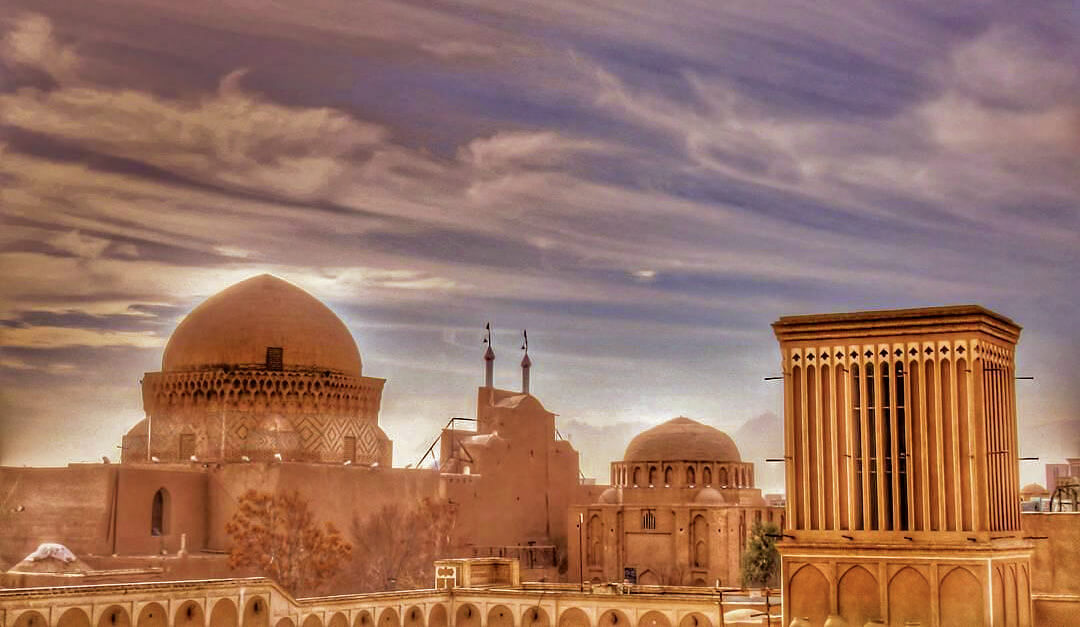Introduction
Yazd province of Iran has a rich culture that has been formed by its unique history, religious customs and traditions. This province is home to a diverse population of people with different values and cultures, all of which contribute to the richness of the region's culture. The culture of Yazd has been influenced by the Zoroastrian heritage of this region, which is evident in its famous wind towers and fire temples. Zoroastrian religion, a pre-Islamic religion, has had a significant impact on the culture of Yazd and still plays a decisive role in the daily life of local people.
The Zoroastrian religion, which was founded in ancient Iran, played a significant role in the formation of Iranian culture and beliefs. Religion established the values of good thoughts, good deeds and good deeds. These values are deeply integrated into Iranian culture and have shaped people's practices and beliefs. Yazd is home to many Zoroastrian fire temples that attract many tourists from all over the world. These fire temples are located in the heart of the city and have been an essential part of the religious and cultural heritage of the region.
In addition to fire temples, the people of Yazd have also created a unique and distinctive architecture that reflects Iranian values and culture. The famous windmills of Yazd are excellent examples of this architecture. Wind towers are designed in such a way that they catch the wind and direct it inside the houses, thus naturally cooling the spaces and making the harsh climatic conditions of Yazd bearable. This innovative architecture has been used for centuries in Yazd and other parts of Iran and has helped to shape the character and identity of the region.
The architecture of Yazd also includes traditional mud and brick structures that further show the unique cultural values of this region. This style of buildings are designed and built in such a way that they can withstand the harsh climatic conditions common in the region. The result is a unique blend of architecture that is both functional and aesthetically pleasing.
The people of Yazd also have a unique clothing style that reflects their cultural heritage. The traditional dress of Yazd is known as "Kordak". This style of clothing is characterized by the use of heavy fabrics and intricate patterns. This dress is usually worn with a scarf, which is a symbol of chastity and piety.
Literary significance
Yazd province has been a significant hub for Iranian literature and has produced some of the most outstanding literary figures who have played a role in the development of Persian literature. Yazd has been the birthplace of many great Iranian poets, scholars and writers because they had a significant impact on the Persian language and literature. This province has also played a significant role in the development of the Persian language.
Yazd's significant contribution to Persian literature dates back to the 13th century. These literary works have contributed to the formation of the Persian language and enriched Iranian literature as a whole. Yazd also played an important role in the development of Persian calligraphy. The art of calligraphy has deep roots in Iranian culture and Yazd has made a significant contribution to its development. The influence of Zoroastrians in the region can be seen in the way of writing in this region. The calligraphy style of Yazd is famous for its complex motifs and designs that represent the religious and cultural heritage of this region.

Family is an essential institution in Yazd
Artistic importance
Yazd province has played an important role in the development of Iranian art and has produced some of the most important works of art in the country. Yazd art includes a wide range of forms including pottery, weaving and metalwork. One of the most important artistic contributions of Yazd is its famous cashmere weaving.
Cashmere weaving
is a unique weaving style that is native to Iran and has been popular in Yazd for centuries. Cashmere is a type of fabric that is woven using silk and wool. The art of cashmere weaving requires exceptional skill and craftsmanship, and the end product is a beautiful and intricate work of art. Cashmere weaving has been passed down from one generation to another and has become one of
the most important artistic endeavors in the region.
The artistic heritage of Yazd includes pottery and metalwork. Pottery has been a significant art in Iran for centuries, and its influence can be seen in the intricate designs and patterns of Yazd pottery. The metalwork of Yazd is also remarkable and includes many unique designs and styles that reflect the culture and traditions
of this region.
Social importance
Yazd province is known for its unique social structure characterized by strong family values and deep-rooted religious beliefs. The people of Yazd place a lot of emphasis on family and community, and this has helped to shape the social dynamics of the region.
Family is an essential institution in Yazd and people attach
great importance to family ties and values. The extended family pattern is still common in Yazd and it is not uncommon for families to live next to each other. This social structure has helped foster a strong sense of community and strengthened the region's commitment to family values.
Religion also plays a significant role in the social structure of Yazd. The Zoroastrian heritage of the region has deeply influenced its social dynamics and this can be seen in the strong bonds between the people and their religious practices. Religious practices, such as attending fire temples, have been an essential part of local culture and have helped shape the social
identity of the region.
Economic importance
Yazd province has made a significant contribution to Iran's economy and played an effective role in the development of its industries. The economy of this region is primarily based on agriculture, commerce and industry. Yazd is famous for the production of textiles, carpets and metalwork, which has helped
this province to create a prosperous industry.
In addition to textile and metalworking, Yazd is also famous for its unique food industry. The traditional sweets of this region known as "Qatab" have become a popular food among the people of Iran and the world. This sweet is made using a combination of flour, sugar and nuts and is a must try for anyone who travels to this area.
The strategic location of this province between the eastern and western borders of Iran has made it an important commercial hub for centuries. The strategic location of this city along the Silk Road has helped the province to establish strong trade links with neighboring countries and
contributed to its economic prosperity.

The historical importance of Yazd dates back to the pre-Islamic era in Iran
Geographical importance
The unique architectural style of Yazd, such as wind towers and mud and brick structures, has been developed to deal with the harsh climatic conditions of the region. The location of this area near the desert has also affected its food and agriculture. The people of Yazd have developed unique agricultural
techniques designed to cope with the region's dry climate and limited water resources.
Historical significance
The historical importance of Yazd dates back to the pre-Islamic era in Iran. The Zoroastrian heritage of the region has played a significant role in the formation of Iranian culture and religious beliefs. This city has a rich history and has been a cultural, commercial and religious center for centuries.
The history of Yazd can be traced back to 3000 BC, which makes it one of the oldest inhabited areas in Iran.
This area has been an important center for the spread of Persian culture and has contributed greatly to the development of Persian literature, art and science. The works of famous Persian-speaking poets who were born in Yazd, lived, or worked in Yazd show the significant contribution of this region in Persian literature.
conslusion
Yazd province is an important part of cultural, literary, social, economic, geographical and historical heritage of Iran. The rich culture, literary traditions, unique architecture and social structure of the region have helped shape its identity and contributed significantly to the overall development of Iran. Yazd's strategic location and strong business ties with neighboring countries have helped this region to be recognized as a major business hub in Iran. The unique architectural style of this region, such as wind towers and mud and brick structures,
has been developed to cope with the harsh climatic conditions of the region. The historical importance of Yazd dates back to the pre-Islamic era and has made it one of the oldest residential areas in Iran. Therefore, the attention and study of Yazd province is very important for the development and preservation of its cultural and historical importance at the global level.
Dear Visitor; Please take a look at the list of 50 most visited websites in the world wide web: YouTube, Facebook, google, translate, gmail, weather, amazon, Instagram, cricbuzz, Hotmail, wordle, satta king, twitter, yahoo, yandex, sarkari result, Netflix, google maps, yahoo mail, roblox, whatsapp, NBA, BBC news, outlook, pinterest, flipkart, eBay, omegle, live score, tiktok, canva, ipl, premier league, hava durumu, ibomma, walmart, twitch, ikea, shein, linkedin, home depot, e devlet, lottery, snaptik, cricket, serie a, nfl, spotify, fox news, amazon prime; There is no book publishing related or project management website in this list. We are working hard to bring these important issues to the center of concentration of societies. Please introduce us via social media, share our website with others and help us to make our world a better place to live. Best Regards.













Write your review